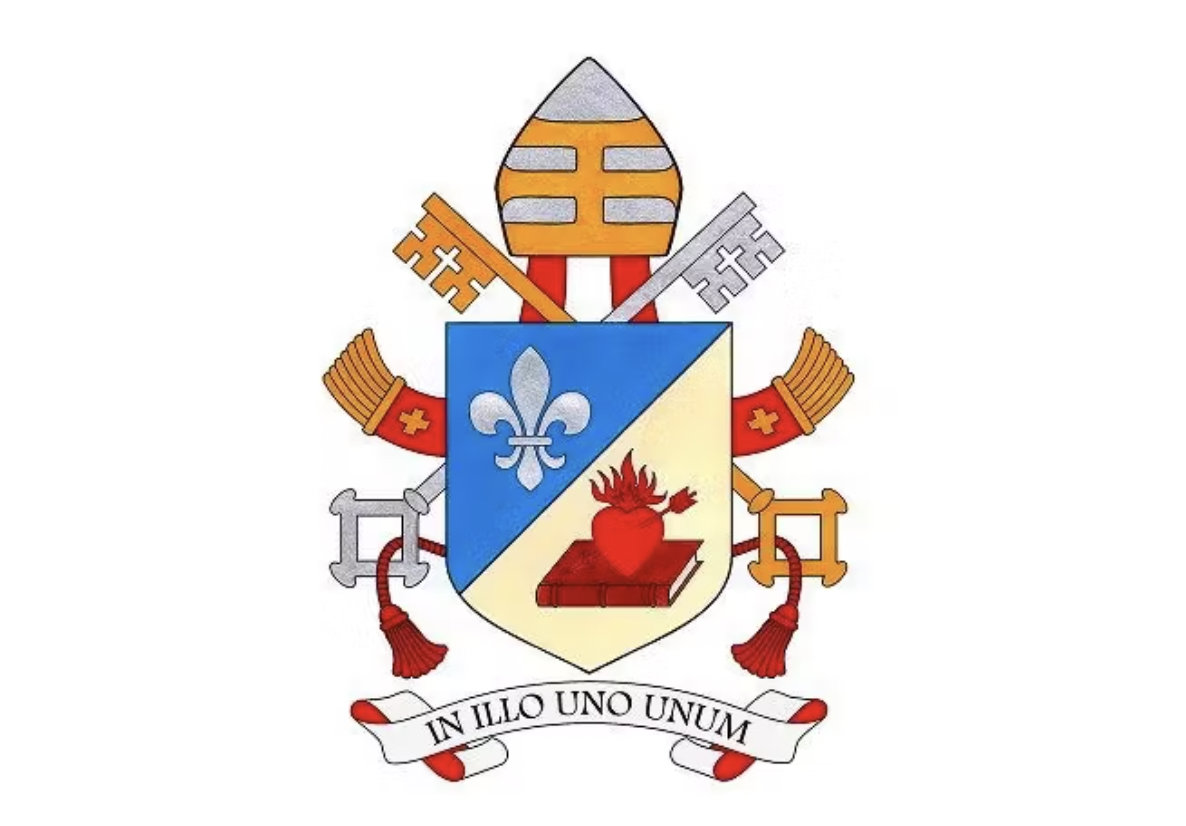
In the early days of a new papacy, some of the most telling indicators of a Pope’s mission and vision come not through speeches or documents but in the quieter symbolism of his chosen motto and coat of arms. These heraldic and textual signs offer a profound synthesis of the Pope’s personal spiritual journey and the message he wishes to communicate to the Church and the world. In the case of Pope Leo XIV, both elements speak clearly of a mission rooted in unity, tradition, and profound theological continuity.
A Motto Rooted in Unity
Pope Leo XIV has retained the Episcopal motto he adopted as a bishop, In illo uno unum, a phrase drawn from a sermon by St Augustine of Hippo. Translated, it means “In the One Christ we are one.”
This brief but powerful statement is more than a theological ideal; it is a declaration of purpose. It represents a bold invite to unity and communion within the Church and the world. Before his election, the then Cardinal Prevost described the motto as central to his identity as an Augustinian: “As an Augustinian, for me promoting unity and communion is fundamental. St Augustine speaks much of the unity in the Church and the necessity to live it.”
The Coat of Arms: A Theological Synthesis
The papal coat of arms or stemma is no mere decorative tradition. For over eight centuries, popes have employed these visual compositions to encapsulate the theological and pastoral themes of their ministry. Pope Leo XIV’s coat of arms does just that, weaving together elements of his religious heritage, personal devotion, and the universal mission of the papacy.
The shield or escutcheon is divided diagonally, each section bearing a distinct emblem. In the upper portion appears the fleur de lis, the white lily on a blue background. Rich in Marian symbolism, the fleur de lis traditionally signifies the purity of the Virgin Mary and her Immaculate Conception. The blue background evokes her royal dignity as Mother of God. More subtly, the flower’s three petals serve as a Trinitarian symbol, highlighting Mary’s singular relationship with the Divine Trinity: daughter of the Father, mother of the Son, and spouse of the Holy Spirit.
The lower section of the shield is a direct reference to the Pope’s Augustinian roots. A burning heart rests upon a closed book, a powerful icon derived from St Augustine’s own account of his conversion. “You have pierced my heart with your Word,” Augustine wrote, and in this image we see the passion for truth and Scripture that marked his life and now shapes Pope Leo’s vision.
Above the shield rests the bishop’s mitre, marked by three horizontal bands joined at the center. These symbolize the threefold office of the Pope to teach, to govern, and to sanctify all unified in the pastoral ministry of the Roman Pontiff. Behind the shield are the familiar crossed keys of St Peter, given by Christ himself, one gold signifying heavenly authority, the other silver representing earthly jurisdiction. Together they recall the enduring Gospel mandate: “Whatever you bind on earth will be bound in heaven; whatever you loose on earth will be loosed in heaven” (Matthew 16:19).
A Mission in Symbols
In word and symbol, Pope Leo XIV has chosen to present a papacy grounded in tradition yet deeply conscious of the contemporary need for unity. His motto and coat of arms are not mere personal statements, they are theological signposts pointing to the heart of his mission: a Church renewed in communion, rooted in the Word, and guided by the example of the Blessed Virgin Mary and St Augustine.
As the Church embarks on this new chapter, the imagery chosen by Pope Leo XIV reminds the faithful that every papacy, while distinct, is ultimately a continuation of the same divine mission to shepherd the people of God toward deeper unity in Christ.
May God bless the ministry of Pope Leo XIV and the Virgin Mary watch over a guide him always.
